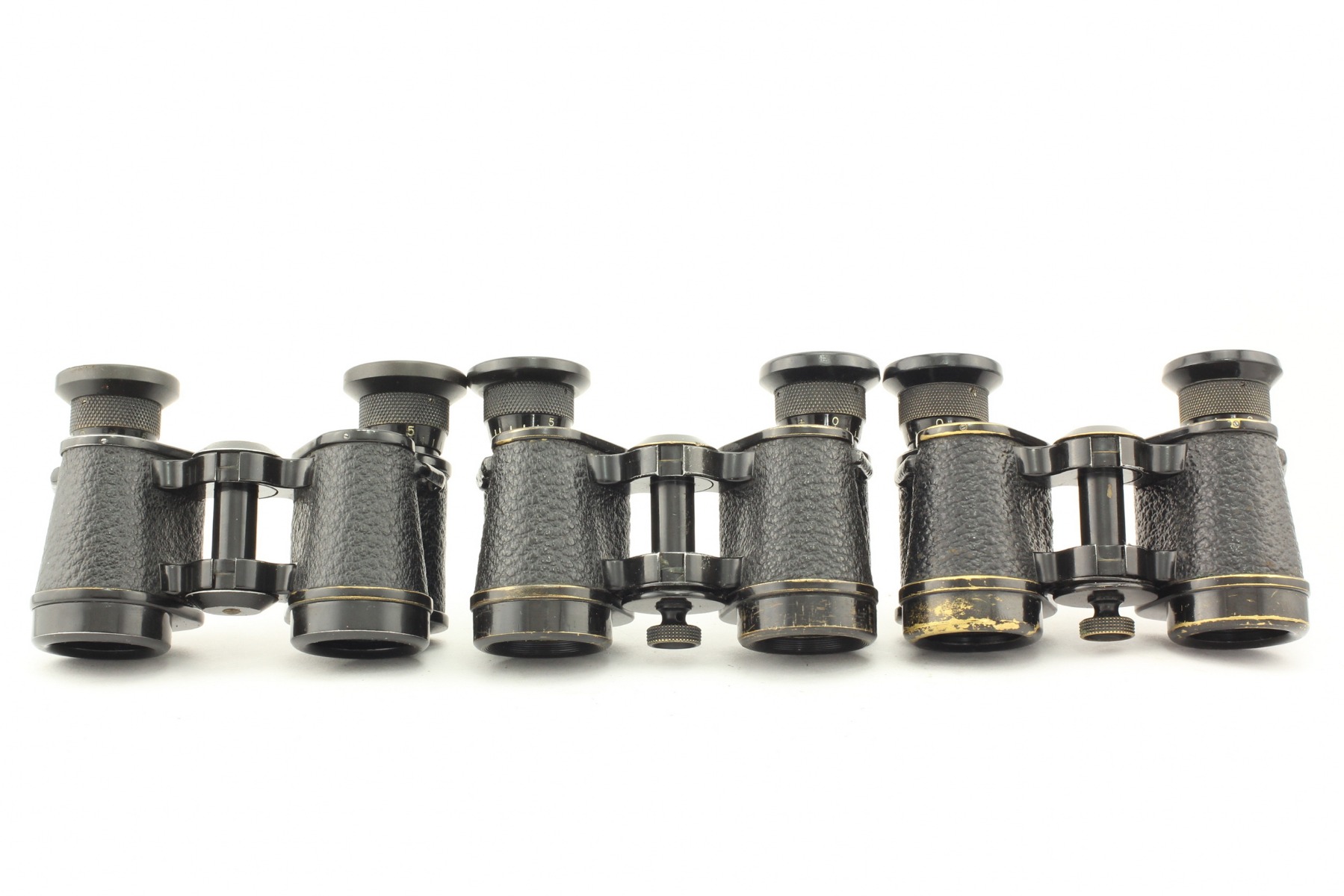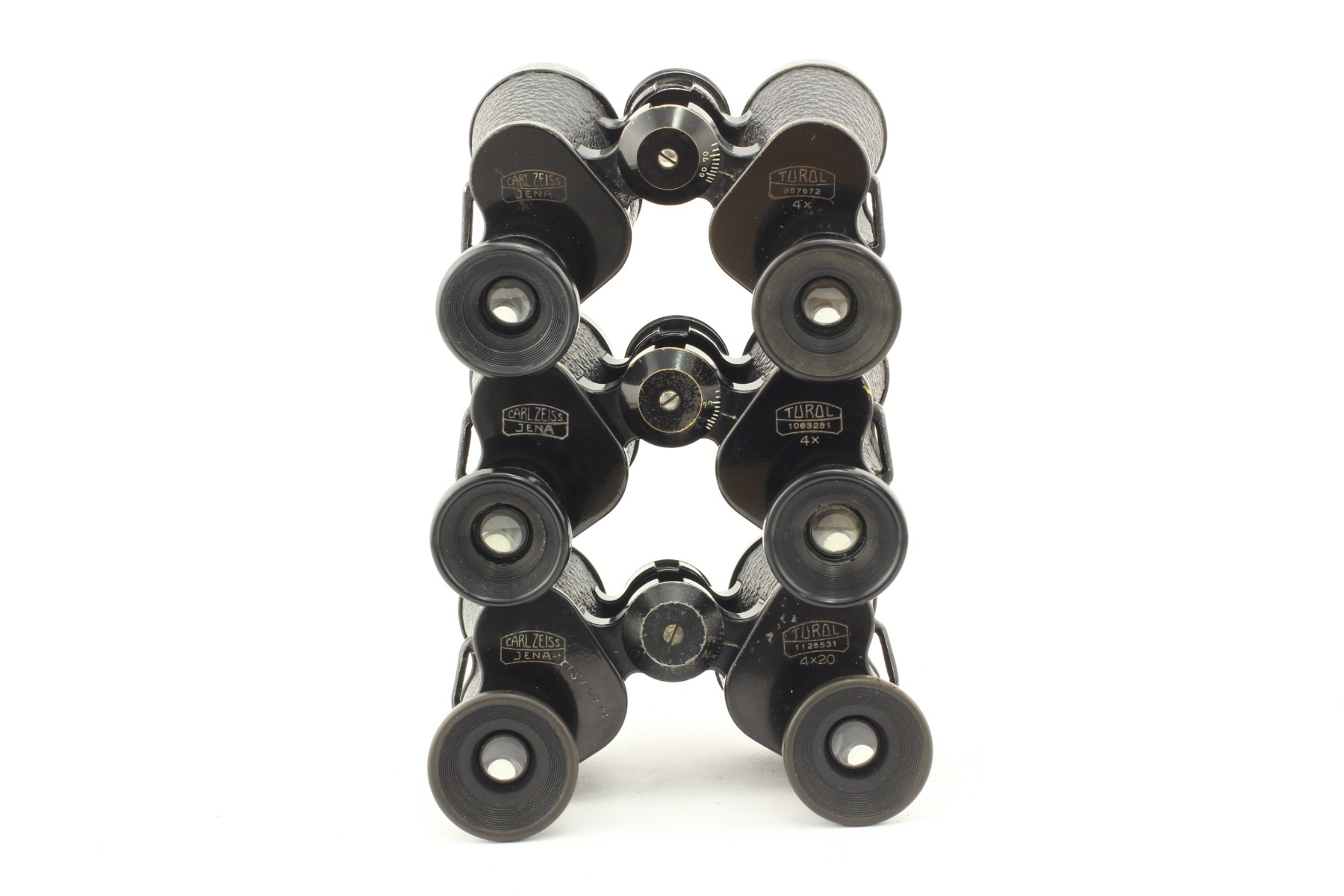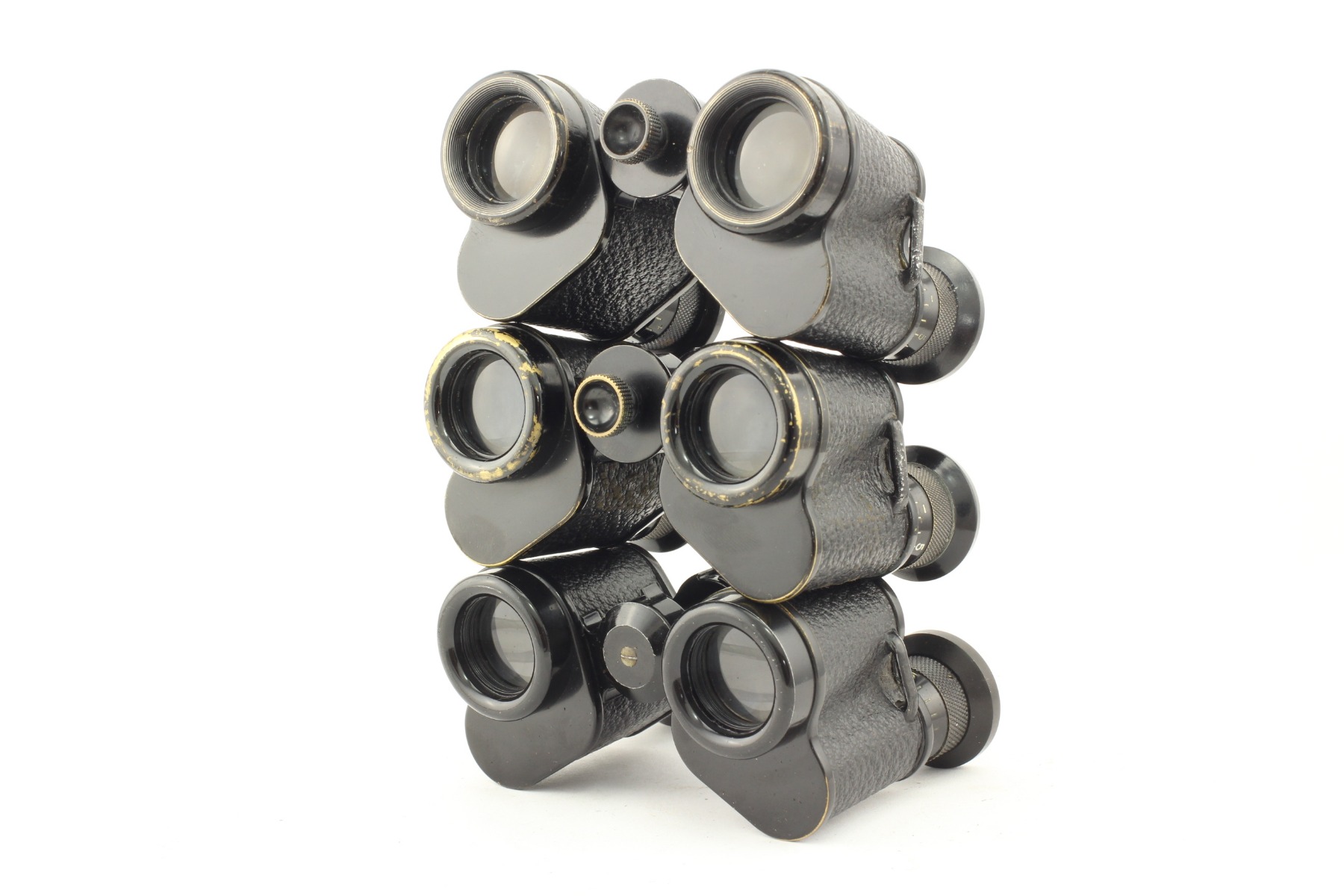Magnification: 4x
Aperture (objective diameter): 20 mm
Field of view: 10.3°
Exit pupil diameter: 5 mm
Visible field of view (eyepiece FOV): 41°
The closest focusing distance: 2.8 m
Width: 7.5 cm
Height: 10.4 cm
Weight: 275 g
Production date: 1920.
Binoculars Carl Zeiss Jena Turol 4x
In 1913 Carl Zeiss produced a small prismatic binocular with a 20 mm objective lens - Turol 4x. The device found application where light weight and small dimensions were required: namely in tourism, sports, theater, etc. A military version of the Turol appeared in 1914 – it was the D.F.4x binocular. It was supposed to be used in light cavalry due to its small size and light weight. However, it didn’t become wide spread, because the cavalry gradually lost its importance for conducting the hostilities during World War I. Therefore, this military binocular became a rarity among the collectors. Both versions (the “civil” and the military one) had the same distance between the lenses and the eyepieces (base), which affected the binocular’s plasticity negatively. It was a rather unusual design solution for Carl Zeiss binoculars of that time, since there even was a condition of Carl Zeiss patent in the period from 1896 to 1908, according to which other manufacturers of prismatic binoculars were required to produce their models with the same distance between the lenses and the eyepieces. This design decision may have been dictated by the desire to reduce the size and weight of these devices.
Turol 4x was produced from 1913 to 1926 (28), with a break during World War I. Several modifications of this model with minor design differences are known for the time being:
- with rounded objective covers with the grooves to minimize stray light and with the central hinge clamp (lock) (first version ,released for a short time from 1913 to 1914);
- with rounded objective covers without the grooves to minimize stray light and with the central hinge clamp (lock) (released from 1914 with a break till 1920/21);
- with rounded objective caps without the grooves to minimize stray light and without the central hinge clamp (lock) (released from 1920/21 to 1926/28)



This device belongs to the second design version. It has the eyepieces with base diameter equal to 16.5 mm and the upper prism cover width equal to 38 mm (see photo). The eyepieces’ front lens diameter is equal to 9.5 mm. The eyepieces have a diopter scale and a diagonal knurling. The binocular’s body height (including the upper prism cover) is equal to 47 mm; this value is equal to 39 mm without the lens barrel. The prism covers are pressed to the binocular’s body with the help of lens covers and the “skirts” at the eyepieces’ base. The prism covers are attached on the side to the housing with the help of one screw.
There are inscriptions “Carl Zeiss Jenna” on the left prism cover. There is also an inscription “Turol 1063231 4x” on the right prism cover. The inscription is made in block letters on the background of Carl Zeiss Tessar photo lens schematic image.
The binocular’s coffer has features peculiar to that period (see Hans T. Seeger. Zeiss Handfernlaser 1919-1946, Modelle-Merkmale-Mythos, pp. 607-627): specific rivets, an embossed “Carl Zeiss Jenna” logo. The coffer’s peculiarity is the presence of large “military” loops for attaching the coffer to a belt. This feature can be probably considered not as a sign of binocular’s military application, but as a “fashion” for military attributes in that period of German history (the end of World War I – see photo).
The binocular’s serial number is “1063231” and it was manufactured in 1920.
The binocular’s model with central focusing, namely Turоlem 4x, was released in 1913.
Turol 4x was produced from 1913 to 1926 (28), with a break during World War I. Several modifications of this model with minor design differences are known for the time being:
- with rounded objective covers with the grooves to minimize stray light and with the central hinge clamp (lock) (first version ,released for a short time from 1913 to 1914);
- with rounded objective covers without the grooves to minimize stray light and with the central hinge clamp (lock) (released from 1914 with a break till 1920/21);
- with rounded objective caps without the grooves to minimize stray light and without the central hinge clamp (lock) (released from 1920/21 to 1926/28)
This device belongs to the second design version. It has the eyepieces with base diameter equal to 16.5 mm and the upper prism cover width equal to 38 mm (see photo). The eyepieces’ front lens diameter is equal to 9.5 mm. The eyepieces have a diopter scale and a diagonal knurling. The binocular’s body height (including the upper prism cover) is equal to 47 mm; this value is equal to 39 mm without the lens barrel. The prism covers are pressed to the binocular’s body with the help of lens covers and the “skirts” at the eyepieces’ base. The prism covers are attached on the side to the housing with the help of one screw.
There are inscriptions “Carl Zeiss Jenna” on the left prism cover. There is also an inscription “Turol 1063231 4x” on the right prism cover. The inscription is made in block letters on the background of Carl Zeiss Tessar photo lens schematic image.
The binocular’s coffer has features peculiar to that period (see Hans T. Seeger. Zeiss Handfernlaser 1919-1946, Modelle-Merkmale-Mythos, pp. 607-627): specific rivets, an embossed “Carl Zeiss Jenna” logo. The coffer’s peculiarity is the presence of large “military” loops for attaching the coffer to a belt. This feature can be probably considered not as a sign of binocular’s military application, but as a “fashion” for military attributes in that period of German history (the end of World War I – see photo).
The binocular’s serial number is “1063231” and it was manufactured in 1920.
The binocular’s model with central focusing, namely Turоlem 4x, was released in 1913.
